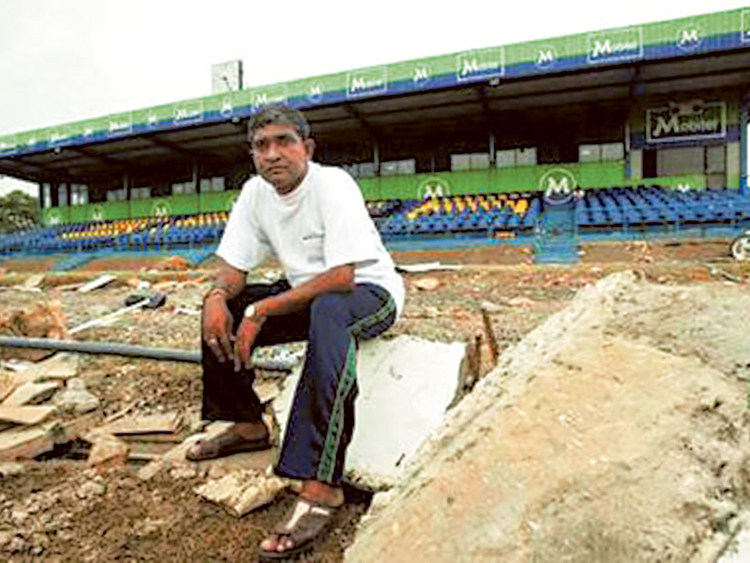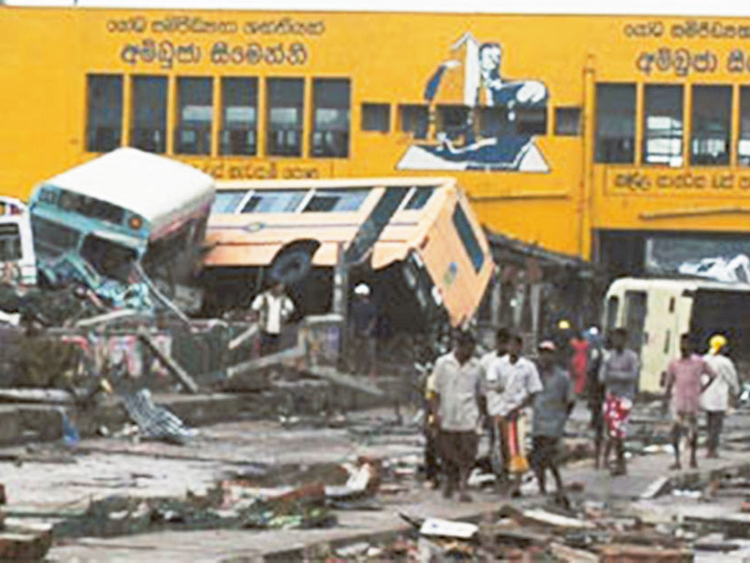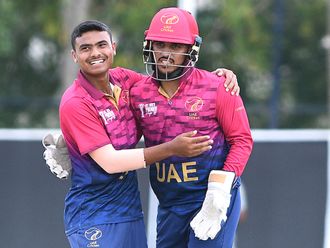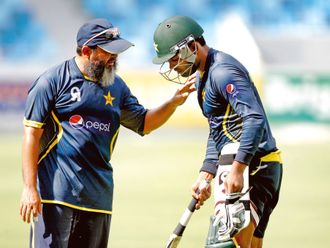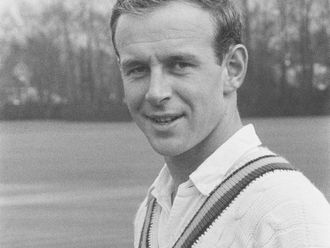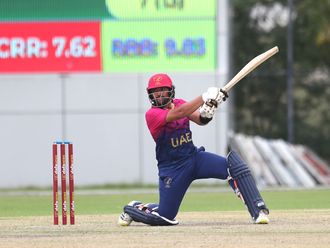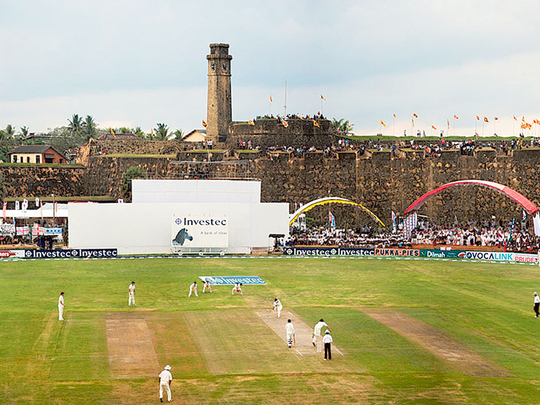
Galle: As the Sri Lankan national side began their battle with the Kiwis in the Boxing Day Test at Hagley Oval, people in Galle were reminded of the devastating tsunami, following the earthquake off the West Coast of Sumatra that hit them a decade ago.
Coincidently, the team were involved in a similar series with the New Zealanders and it was soon after their first ODI in Auckland that the disaster had struck. Many players from that team — Sanath Jayasuriya, captain Marvan Atapattu, Dilhara Fernando, Upal Chandana, Nuwan Zoysa — were directly or indirectly affected and had spent some anxious moments to know the whereabouts of their loved ones.
Publications, yesterday, commemorated the horrific turn of events that piled the agony on the then war-torn country. Today, the Isle is a thriving nation, free of divide. When you look around the vibrantly-lit streets from the capital to Kandy and to Galle, marking the festive season, one can gauge there now exists religious coherence.
There is business as usual at the towering World Trade Centre and the roads leading to it are chock-a-block with traffic and abuzz with office-goers. Tourism is clearly at its peak and children are flocking the beaches despite heavy rains lashing the coast and more importantly, cricket – which has always held this tiny nation together — is very much flourishing as we see colts from India, Maldives and the UAE in their whites waiting for the skies to clear to take part in an invitational tournament run by the man instrumental in producing several top Lankan players — Nelson Mendis.
When the 10-metre high waves from the Indian Ocean completely ruined one of the most picturesque cricket grounds in the world - Galle International Stadium — most felt, cricket was wiped out from there forever.
While the ground and most of the buildings within the stadium area were destroyed, it served as a temporary shelter for hundreds of displaced people. Makeshift camps and a helipad were erected there to assist the survivors.
Thilanga Sumathipala, president of the Sri Lanka cricket board then, launched the disaster assistance fund named ‘Cricket-Aid’ and sport fanatics from across the globe rallied together and contributed whole-heartedly – with the Emirates Cricket Board also playing their part almost immediately by contributing $25,000 (Dh92,000).
Jayananda Warnaweera, former Sri Lankan batsman and curator of Galle cricket stadium, who had seen it all unfold, went down memory lane for Gulf News and relived those dark days of horror.
“Frankly speaking, you are making me recollect those days which I don’t want to remember,” said Warnaweera, whose heart and soul was torn apart on that doomed day. After a long pause and taking a deep breath, he started again.
“Till then, no one had heard of what a tsunami was. So many people lost their lives and our lives looked like it was ruined forever. I was there that day at the ground itself when the tsunami struck around 9… no 9.27am to be precise. We were in the office building and saw all the hard work that I had put in since 1998 being washed away in seconds. I think only by the grace of God, I was saved,” recalled Warnaweera, who lives 10 minutes away from the stadium.
“For six months, we were trying to get our life together and most of us didn’t know what was happening. We were just going through the motions not knowing from where to begin. Then probably after eight to nine months we got our act together and decided to move forward.”
Three years after the devastation, what looked a virtually impossible task was achieved — the stadium was back on its feet, in time, for the England series.
“It was an impossible task and there were many people who made that happen. We had a new president in Mahinda Rajapaksa and that’s when things started moving. Players, our board president, all played their part. It was the love for cricket that made it happen. My joy knew no bounds when the first match took place. But today, when you made me remember that day, I still get a chill. It was an incident that will be with me for life,” reminisced Warnaweera, who chose to spend some time in silence by himself at the Galle Stadium as there were no special plans to mark the ill-fated day with an intense Presidential election lurking.
Since that fateful day, Sri Lanka have made it to three World Cup finals and twice their hopes have ended in dejection. In 2007, Australia’s opening batsman and wicket-keeper Adam Gilchrist batted them out of the final at Barbados scoring 149 off just 104 deliveries and in the 2012 World Cup final, Mahindra Singh Dhoni-led India were simply unstoppable in batting maestro Sachin Tendulkar’s home-town Mumbai.
In between, the Sri Lankan team also managed to survive a terrorist attack on their team bus on the streets of Lahore as they were heading for the third day’s play in their Test match against Pakistan.
That incident also left an everlasting scar on the minds of several players but cricket still emerged victorious as they bounced back quickly. Their persistent efforts to excel in the sport was finally rewarded during the T20 World Cup in Bangladesh earlier this year where they beat India in the final and it also turned out to be the highlight in the careers of their renowned batsmen Mahela Jayawardene and Kumar Sangakkara.
Sri Lanka’s recent success, the 5-2 triumph in the ODIs over England at home, again, spoke volumes of their standing in world cricket. The focus has now shifted to the New Zealand series and the forthcoming World Cup. The cricket-crazy Sri Lankans, who have rallied behind the team through thick and thin, have ignited a new hope that their veteran stars Jayawardene and Sangakkara will end their illustrious careers on a high by bringing back the World Cup they had won way back in 1996. The tsunami tragedy has thankfully become a distant memory now – something that has helped them rise as a strong, progressive cricketing nation.


